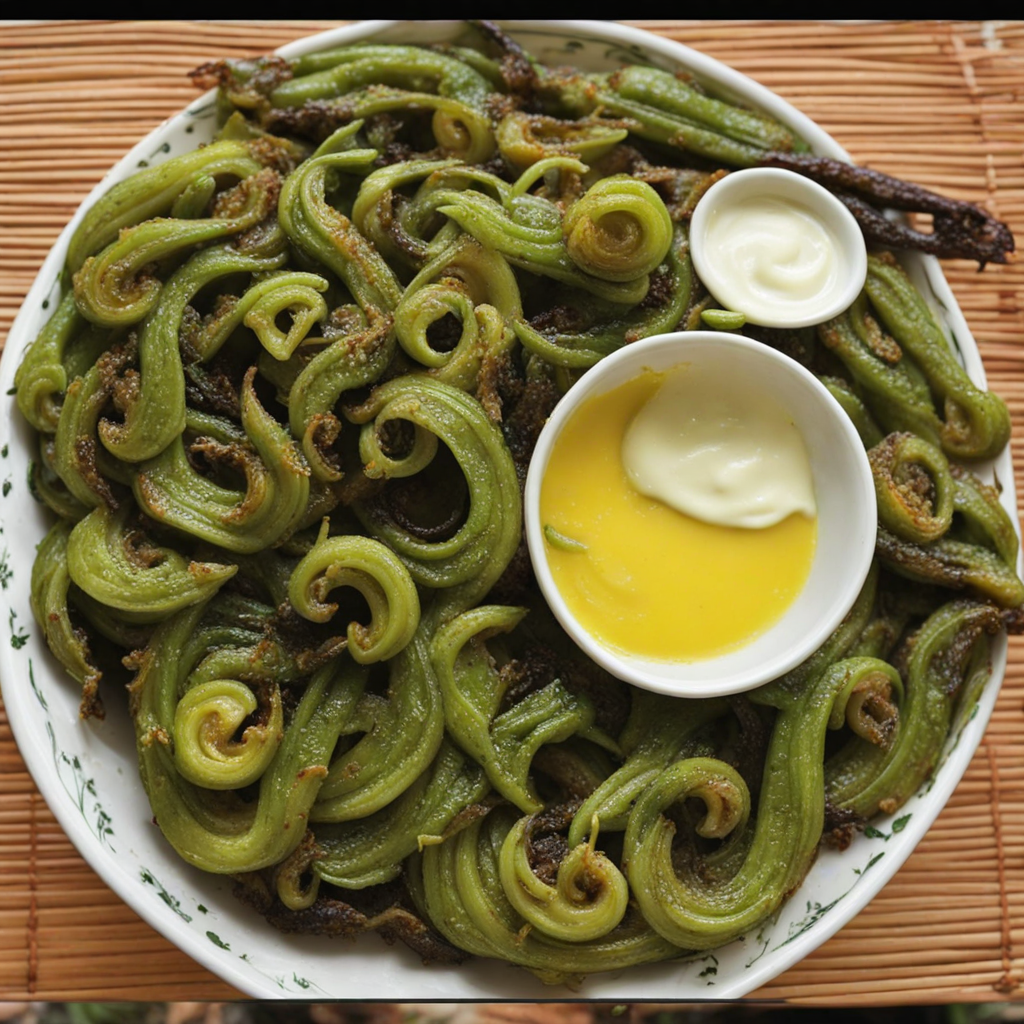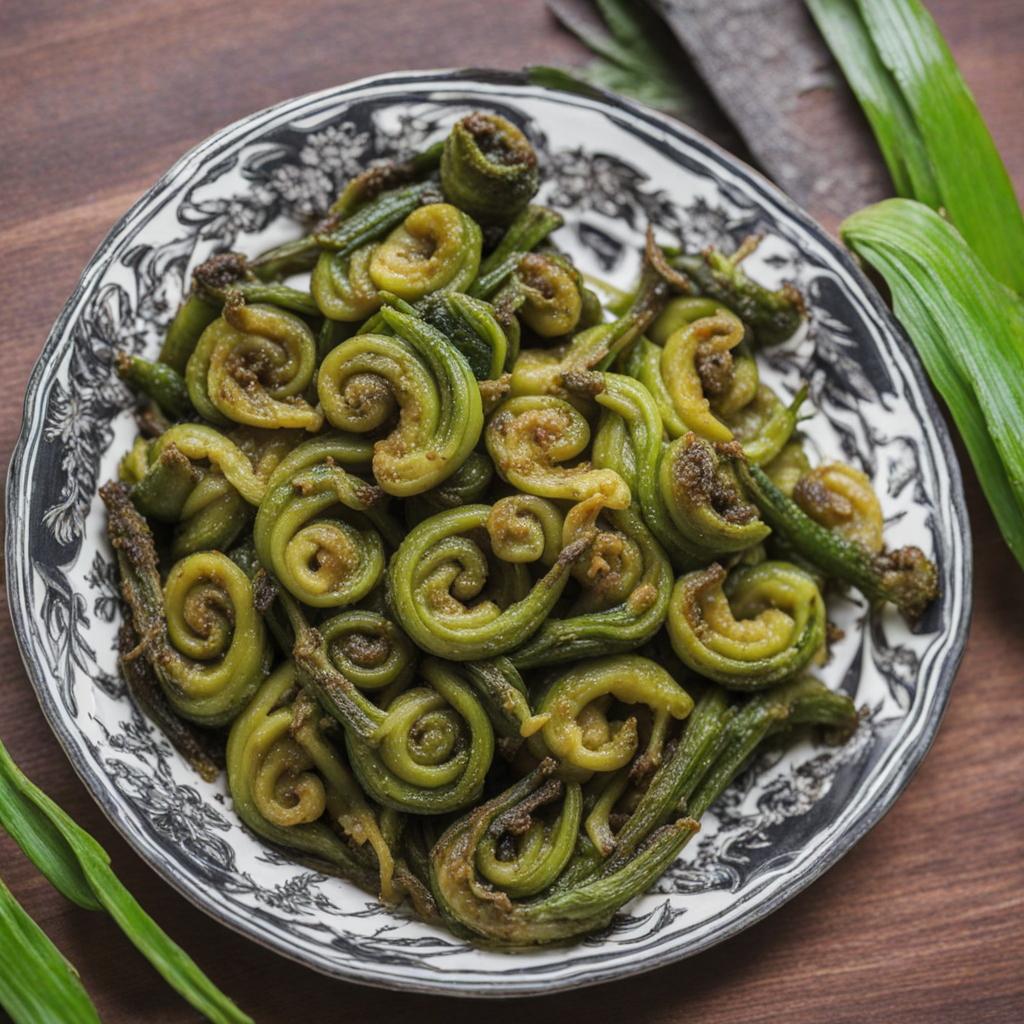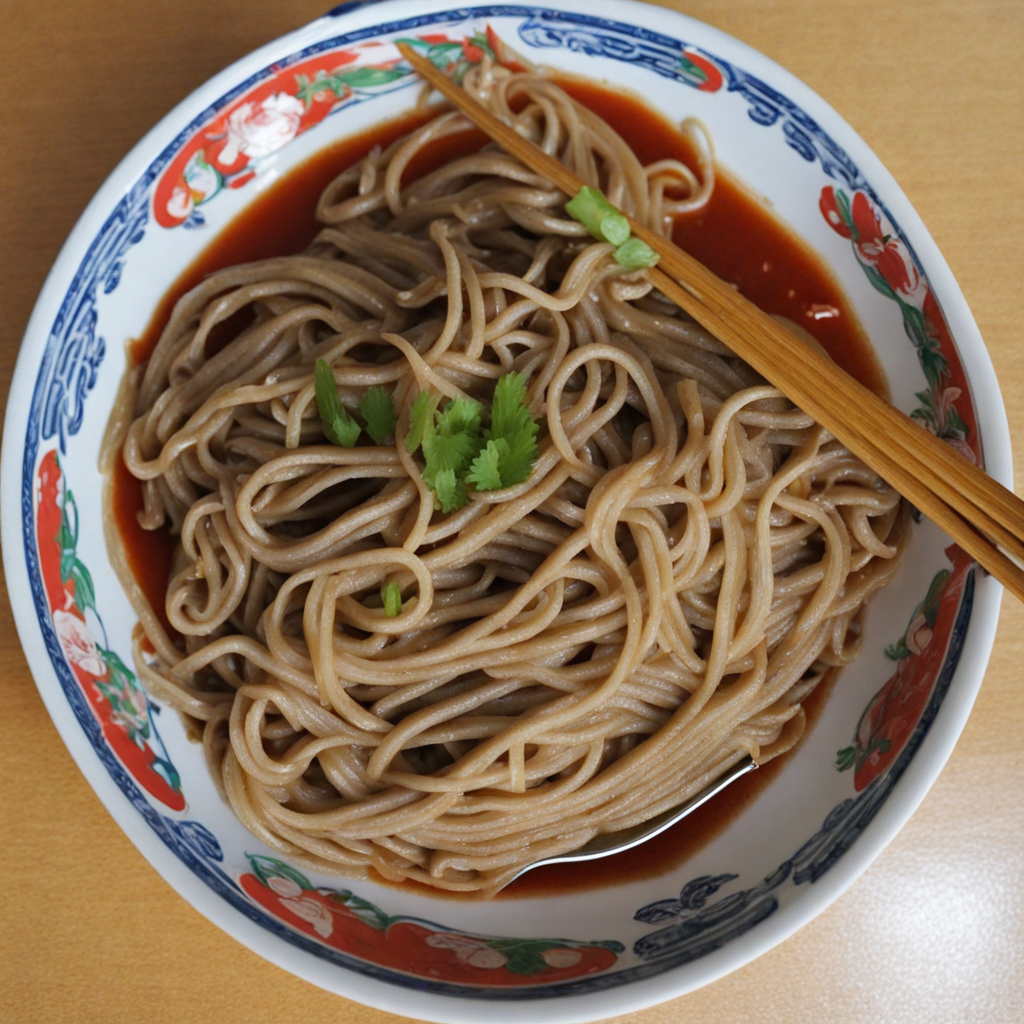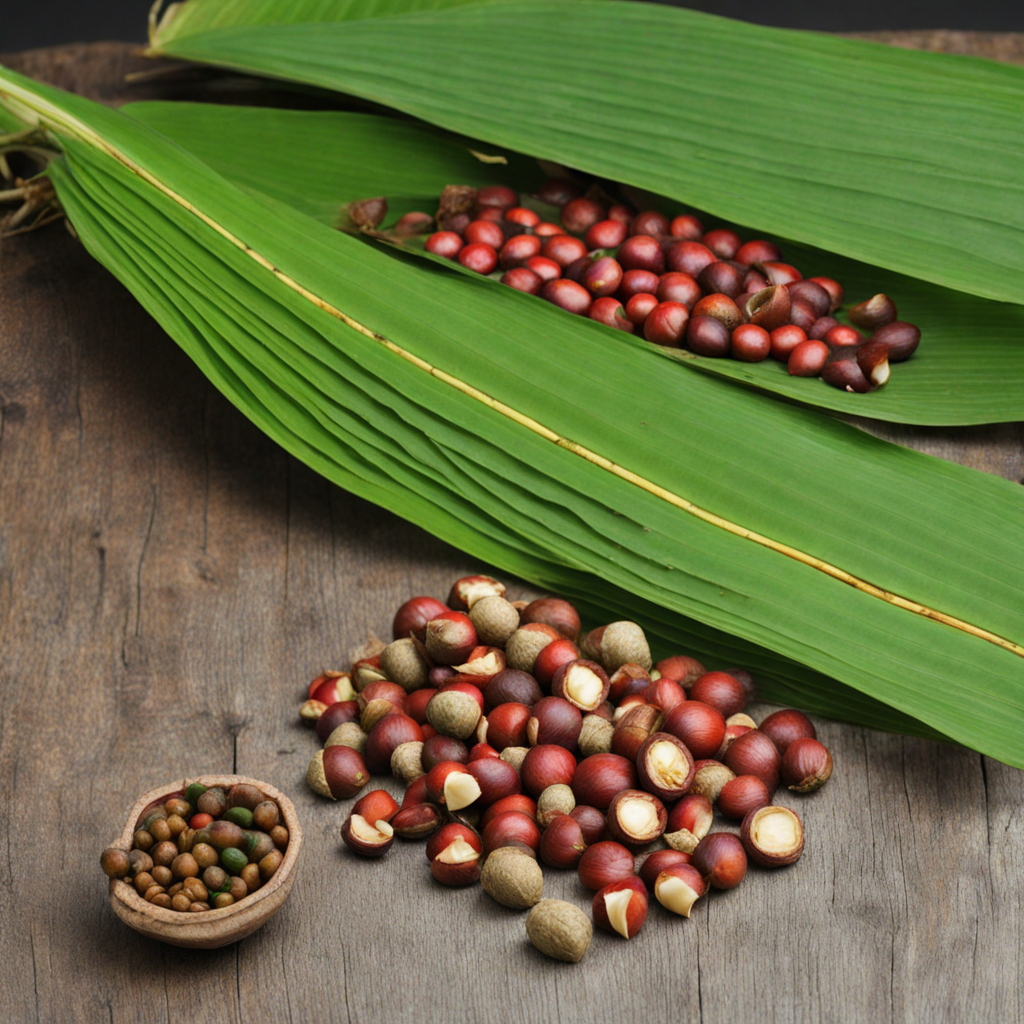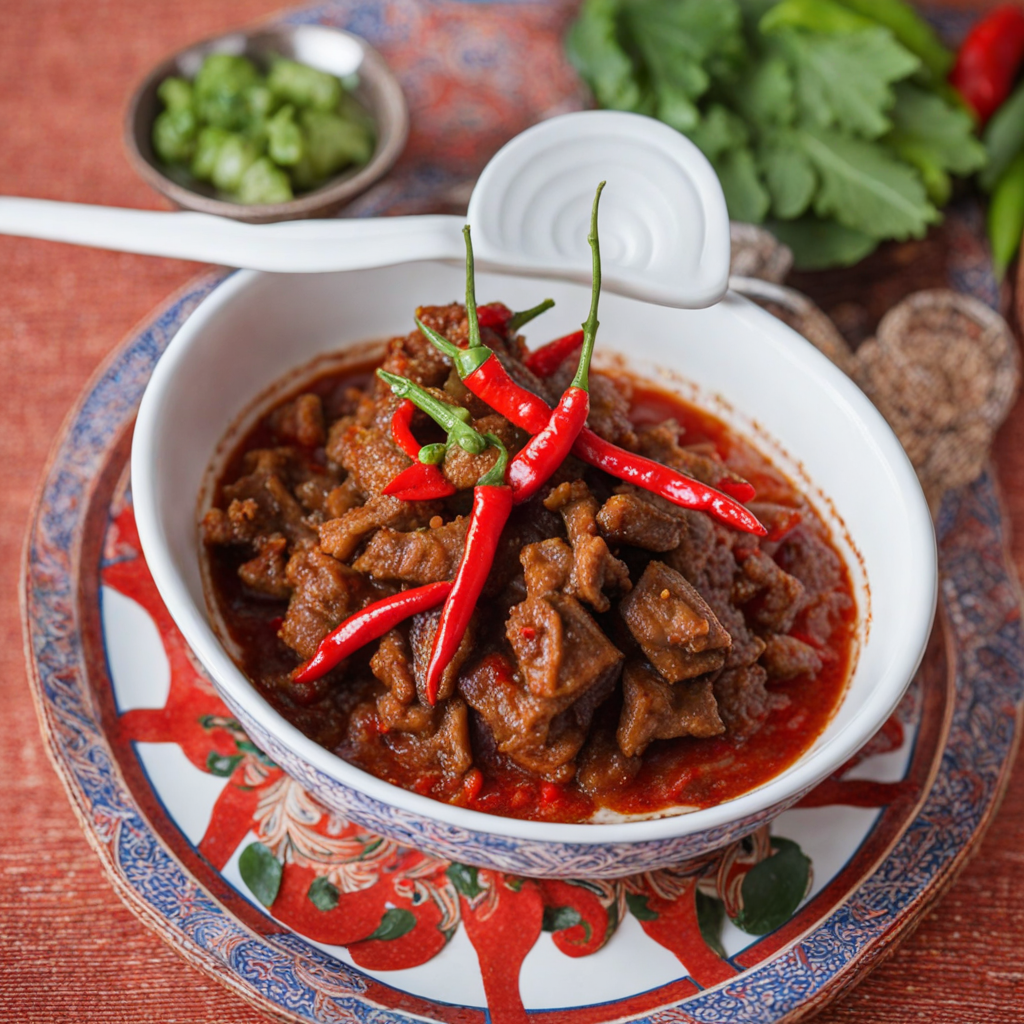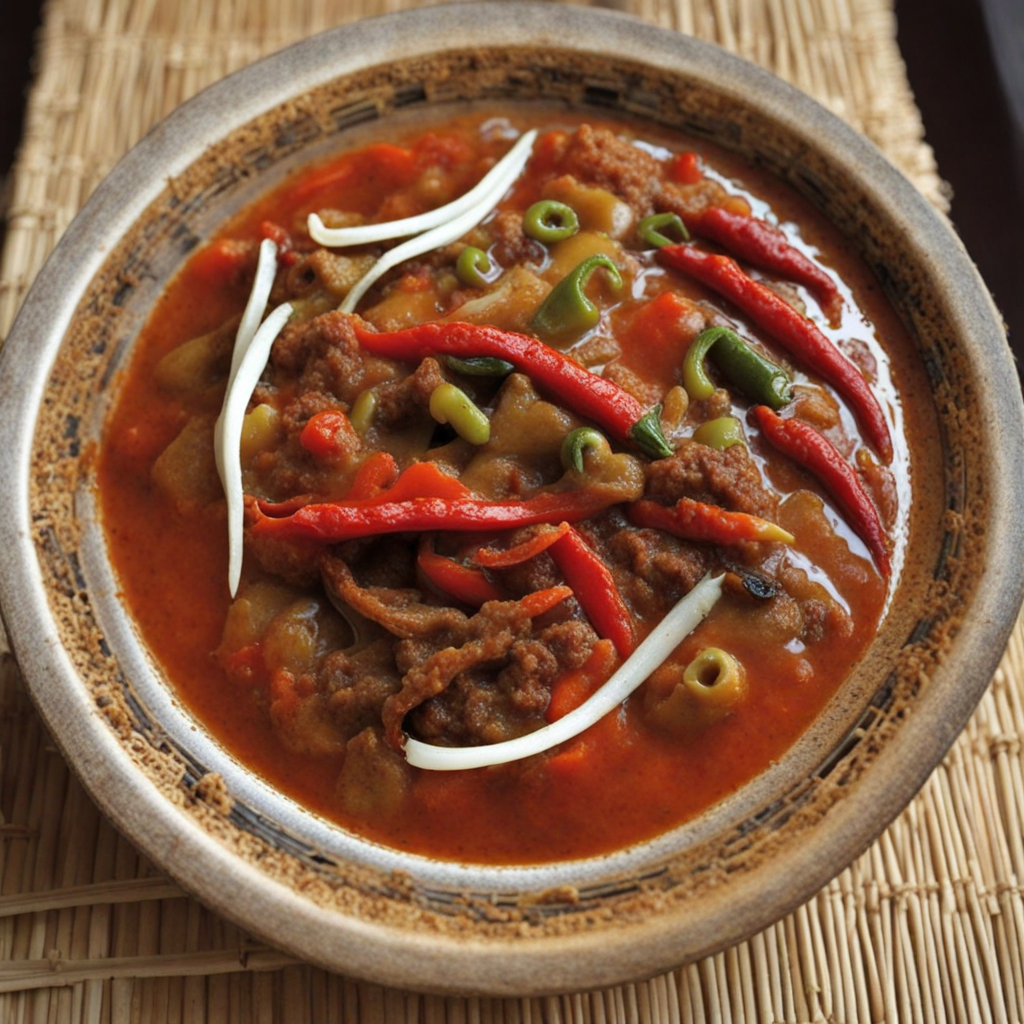Nakey Datshi
Nakey Datshi is a traditional Bhutanese dish that beautifully embodies the country’s culinary ethos of simplicity and bold flavors. At its core, Nakey Datshi features a base of soft, creamy cheese, often made from yak milk, which lends a rich and slightly tangy flavor profile. The dish is typically prepared with a variety of fresh, local vegetables, most commonly the long green chili peppers that are a staple in Bhutanese cuisine. This combination creates a harmonious blend of textures and tastes, where the sharpness of the cheese complements the heat of the chilies, resulting in a dish that is both comforting and exhilarating for the palate. The preparation of Nakey Datshi is a celebration of Bhutan's agricultural bounty. The vegetables are usually sautéed to retain their crunch while absorbing the flavors of the cheese and seasonings. A touch of butter is often added to enhance the richness, creating a luscious sauce that clings to the ingredients. The dish is typically served warm, inviting diners to experience the melt-in-your-mouth cheese paired with the fresh, vibrant notes of the chilies and vegetables, making each bite a delightful exploration of flavor. Nakey Datshi is not just a dish; it is a cultural experience that encapsulates the essence of Bhutanese dining. Often enjoyed with a side of steamed rice, it embodies the communal aspect of Bhutanese meals, where families and friends gather to share food and stories. The balance of heat and creaminess makes Nakey Datshi a perfect representation of Bhutan's culinary landscape, inviting adventurous eaters to dive into a world of new flavors while savoring the warmth of tradition and hospitality that Bhutan is renowned for.
How It Became This Dish
The History of Nakey Dar Chhil: A Culinary Tradition of Bhutan Nestled in the heart of the Eastern Himalayas, Bhutan is renowned for its stunning landscapes, vibrant culture, and unique culinary traditions. Among the myriad of Bhutanese dishes, one that stands out for its unique flavors and cultural significance is Nakey Dar Chhil (ན་ཀེ་དར་ཚིལ།), a traditional dish that embodies the essence of Bhutanese gastronomy. #### Origins of Nakey Dar Chhil The roots of Nakey Dar Chhil can be traced back to the agrarian lifestyle and the natural resources available in Bhutan's diverse ecosystems. The term "Nakey" refers to a type of dried fish, while "Dar Chhil" translates to a dish that incorporates a variety of ingredients, often vegetables and spices. Historically, Bhutan's geographic isolation and varied climate led to the development of a distinct culinary identity, where preservation methods such as drying fish became essential. The practice of drying fish, particularly from the rivers that flow through Bhutan, is a time-honored tradition. Fish like *nakey* (typically a type of carp or other freshwater fish) were dried during the harvest season to ensure a year-round supply of protein. This practice dates back centuries, with fishermen utilizing simple methods to preserve their catch, making dried fish a staple in many households. #### Cultural Significance Nakey Dar Chhil is more than just a dish; it is a representation of Bhutanese culture and its deep connection to nature and community. Food in Bhutan is intertwined with social customs, religious practices, and local traditions. Nakey Dar Chhil is often prepared during festivals, family gatherings, and religious ceremonies, symbolizing hospitality and generosity. In Bhutanese culture, sharing food is an important gesture that fosters community bonds. Serving Nakey Dar Chhil to guests is a way of honoring them, showcasing the host's culinary skills, and expressing goodwill. The dish is often accompanied by local drinks such as *ara* (a traditional alcoholic beverage) or butter tea, enhancing the communal dining experience. Moreover, Nakey Dar Chhil reflects Bhutan's philosophy of sustainability and self-sufficiency. The ingredients are typically sourced locally, highlighting the importance of seasonal produce and a diet that respects the land. The dish embodies the principles of *Gross National Happiness*, a concept central to Bhutanese identity that emphasizes balanced development and well-being over mere economic growth. #### Ingredients and Preparation The preparation of Nakey Dar Chhil involves a variety of ingredients that vary by region and season. The star of the dish, of course, is the dried fish, which is often marinated with spices such as turmeric, chili, garlic, and ginger to enhance its flavor. Additional ingredients may include seasonal vegetables like radish, spinach, and green beans, often sautéed with onions and a blend of local spices. The cooking process is relatively straightforward. The dried fish is first soaked to soften it, then cooked with the vegetables and spices in a traditional Bhutanese cooking pot. This method not only preserves the nutritional value of the ingredients but also allows the flavors to meld beautifully, resulting in a dish that is both hearty and flavorful. #### Development Over Time As Bhutan has modernized, so has its culinary landscape. The introduction of new cooking techniques and ingredients has influenced the preparation of Nakey Dar Chhil. While traditional methods remain prevalent, contemporary chefs and home cooks have begun to experiment with the dish, incorporating elements from global cuisines while maintaining the essence of Bhutanese flavors. With the rise of tourism in Bhutan, Nakey Dar Chhil has also found its way onto the menus of restaurants catering to international visitors. Chefs often present the dish with a modern twist, using fresh herbs or integrating fusion elements that appeal to diverse palates. This evolution has sparked interest in Bhutanese cuisine, allowing Nakey Dar Chhil to gain recognition beyond its borders. Despite these changes, the core values associated with Nakey Dar Chhil have remained intact. The dish continues to be a symbol of Bhutanese identity, representing the resilience of local culinary traditions in the face of globalization. #### Nakey Dar Chhil in Contemporary Bhutan Today, Nakey Dar Chhil is celebrated not only as a traditional dish but also as a canvas for culinary innovation. Bhutanese chefs are increasingly embracing their cultural heritage while also looking forward, creating a culinary dialogue that honors the past while embracing the future. The dish is frequently featured in food festivals and culinary competitions, showcasing the skill and creativity of Bhutanese cooks. Young chefs are taking the initiative to promote Nakey Dar Chhil, experimenting with presentation techniques and incorporating organic and locally-sourced ingredients to appeal to health-conscious diners. Moreover, the popularity of Nakey Dar Chhil has sparked interest in sustainable fishing practices, as communities strive to protect their natural resources while preserving their culinary heritage. Initiatives aimed at educating fishermen about sustainable practices and promoting aquaculture are gaining traction, ensuring that future generations can enjoy the flavors of this beloved dish. #### Conclusion Nakey Dar Chhil stands as a testament to Bhutan's rich culinary heritage, weaving together threads of history, culture, and community. From its origins as a practical solution for preserving fish to its modern iterations that reflect both tradition and innovation, this dish captures the spirit of Bhutan—a land where nature and culture harmoniously intertwine. As Bhutan continues to navigate the complexities of modernization, Nakey Dar Chhil will undoubtedly remain a cherished part of its culinary tapestry, reminding both locals and visitors alike of the profound connections that food can create within a community. With each bite, one can taste not only the flavors of the Himalayan region but also the stories and traditions that have shaped this remarkable dish over time.
You may like
Discover local flavors from Bhutan


